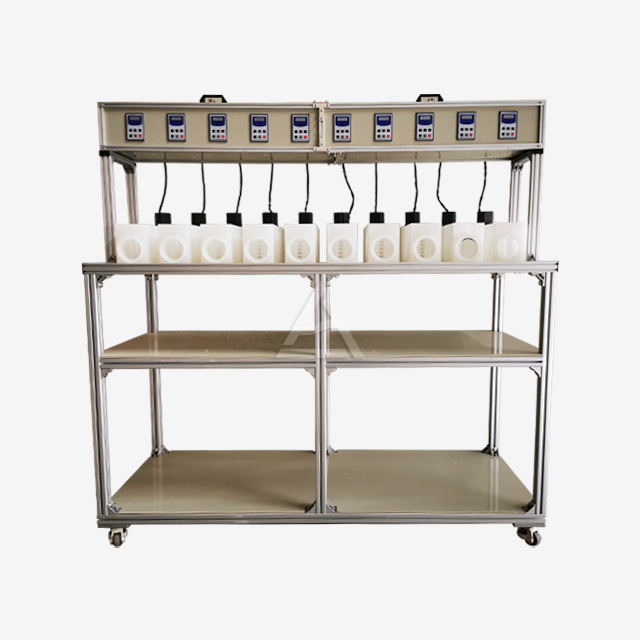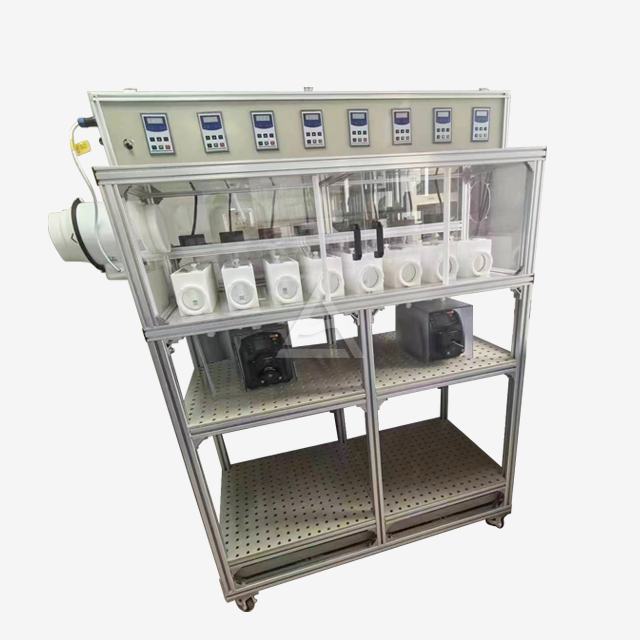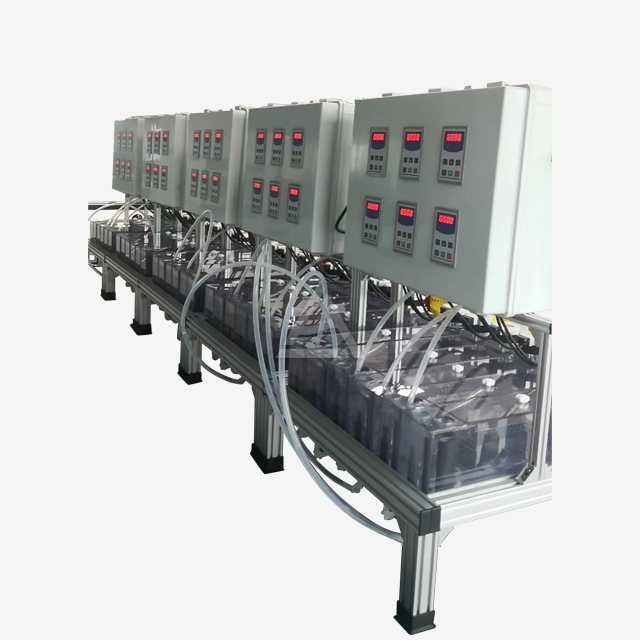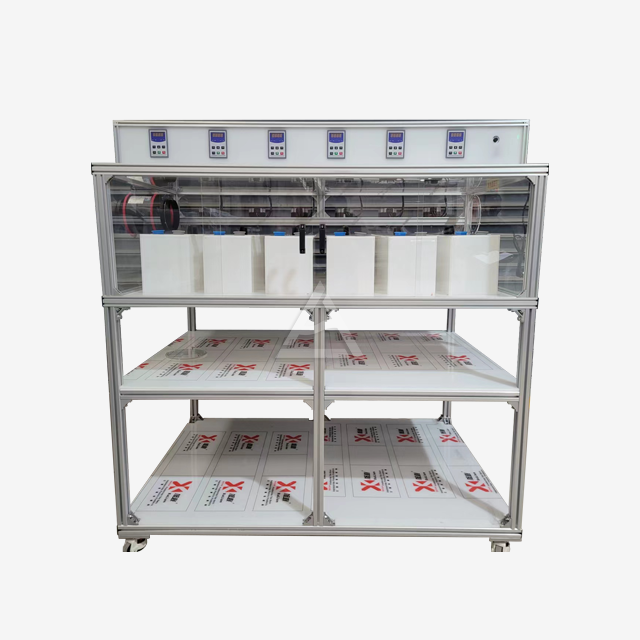Essential Design Specifications for PP Mixer Settlers
When it comes to designing a PP mixer settler, precision and functionality are paramount. These systems, crafted from polypropylene, are pivotal in industries requiring efficient liquid-liquid extraction, such as hydrometallurgy, chemical processing, and waste treatment. The essential design specifications for a PP mixer settler include material durability, tank dimensions, mixing efficiency, phase separation capacity, and flow rate optimization. Polypropylene is chosen for its corrosion resistance, ensuring longevity in harsh chemical environments. The mixer section must facilitate thorough blending, while the settler ensures clear phase separation. Customization options, such as adjustable baffles and overflow weirs, enhance performance. These specifications directly influence the system's efficiency, making them critical for operational success.
Understanding the Core Components of a PP Mixer Settler
A PP mixer settler is a cornerstone in extraction processes, and its design hinges on several key components. By grasping the role of each element, industries can optimize their systems for peak performance, especially in demanding applications like precious metal recovery or electroplating sludge treatment.
The Role of the Mixer in Efficient Extraction
The mixer is the heart of the system, where two immiscible liquids are blended to facilitate mass transfer. Its design must ensure uniform dispersion without creating emulsions that hinder separation. A well-engineered mixer incorporates impellers or turbines tailored to the viscosity and density of the liquids involved. The speed and configuration of these mixing elements are critical, as excessive agitation can lead to inefficiencies. Polypropylene's chemical inertness makes it ideal for this component, as it withstands aggressive solvents and acids commonly used in extraction processes, ensuring consistent performance over time.
The Settler's Function in Phase Separation
Once mixing is complete, the PP mixer settler takes center stage by allowing the blended liquids to separate into distinct phases. Its design must promote rapid and clean disengagement, minimizing carryover between phases. The settler's dimensions, particularly its length-to-width ratio, are crucial for providing sufficient residence time for gravity-driven separation. Baffles and weirs are often integrated to enhance flow distribution and prevent turbulence, which could disrupt the process. Polypropylene's smooth surface further aids in reducing fouling, ensuring that the settler remains efficient even during continuous operation in challenging environments like nickel or cobalt waste treatment.
Integration of Auxiliary Features for Enhanced Performance
Beyond the mixer and settler, auxiliary features elevate the system's functionality. Overflow weirs, for instance, regulate liquid levels, ensuring consistent flow between stages. Adjustable baffles allow operators to fine-tune separation efficiency based on specific process requirements. Additionally, the inclusion of monitoring ports enables real-time assessment of phase boundaries, which is invaluable in maintaining optimal conditions. These features, combined with polypropylene's durability, make the system adaptable to a wide range of industrial applications, from copper waste processing to hydrometallurgical production lines, delivering both reliability and versatility.
Material Selection and Its Impact on PP Mixer Settler Design
The choice of materials in a PP mixer settler is not merely a matter of preference - it directly influences the system's longevity, efficiency, and operational cost. Polypropylene stands out as the material of choice, but its selection must be paired with thoughtful design considerations to maximize its benefits in extraction equipment.
Why Polypropylene is the Preferred Material?
Polypropylene's appeal lies in its exceptional resistance to corrosion, a critical factor in environments where acids, alkalis, and organic solvents are prevalent. Unlike metals, which may degrade over time, polypropylene maintains its integrity, reducing maintenance costs and downtime. Its lightweight nature also simplifies installation and handling, making it a practical choice for large-scale systems. Additionally, polypropylene's thermal stability ensures it can withstand moderate temperature fluctuations, a common occurrence in extraction processes, without compromising structural integrity, making it ideal for industries handling aggressive chemical mixtures.
Design Considerations for Material Durability
While polypropylene offers inherent advantages, its design must account for mechanical stresses and environmental factors. Wall thickness is a key specification, as it determines the system's ability to withstand internal pressures and external impacts. Reinforcements, such as ribbed structures, can enhance rigidity without adding excessive weight. UV stabilizers are often incorporated into the material to prevent degradation in outdoor installations, ensuring long-term reliability. These design elements are particularly crucial in applications like electroplating sludge treatment, where the system must endure continuous exposure to harsh conditions without faltering.
Balancing Cost and Performance in Material Choices
While polypropylene is cost-effective compared to alternatives like stainless steel or exotic alloys, its design must strike a balance between affordability and performance. Over-specifying wall thickness or auxiliary features can inflate costs unnecessarily, while under-specifying risks premature failure. Customization plays a pivotal role here, allowing industries to tailor the system to their specific needs. For instance, in precious metal waste processing, where high-value outputs justify robust designs, additional reinforcements may be warranted. Conversely, in less demanding applications, a streamlined design can deliver efficiency without excessive expenditure, ensuring economic viability.
Optimizing PP Mixer Settler Performance for Industrial Applications
The true value of a PP mixer settler lies in its ability to perform reliably under real-world conditions. Optimizing its design for specific industrial applications requires a deep understanding of process parameters, scalability, and adaptability, ensuring it meets the unique demands of global industries.
Tailoring Design to Specific Process Requirements
Every extraction process has distinct needs, and the design of a PP mixer settler must reflect these nuances. For instance, in hydrometallurgical production lines, where high throughput is essential, the system's flow rate and tank capacity must be maximized without compromising separation efficiency. In contrast, micro-scale applications, such as laboratory testing, may prioritize precision over volume, necessitating smaller, more intricate designs. Factors like liquid viscosity, phase ratio, and desired extraction efficiency all influence the system's configuration, from impeller size to settler dimensions, ensuring it delivers optimal results in its intended context.
Scalability and Modular Design for Global Industries
Industries operating on a global scale require systems that can adapt to varying production demands. A modular PP mixer settler design offers this flexibility, allowing operators to add or remove stages as needed. This scalability is particularly valuable in industries like copper waste processing, where production volumes may fluctuate based on market conditions. Modular systems also simplify maintenance, as individual components can be serviced without disrupting the entire operation. Polypropylene's ease of fabrication supports this approach, enabling cost-effective expansion while maintaining consistent performance across different scales of operation.
Ensuring Long-Term Efficiency Through Maintenance and Monitoring
Even the most well-designed PP mixer settler requires ongoing care to sustain its efficiency. Regular monitoring of phase boundaries, flow rates, and mixing performance helps identify potential issues before they escalate. Polypropylene's non-stick surface reduces fouling, but periodic cleaning is still necessary to prevent buildup that could impair separation. Operators should also inspect structural components for signs of wear, particularly in high-stress areas like joints and baffles. By integrating sensors and automated monitoring systems, industries can enhance operational reliability, ensuring the system remains a dependable asset in applications ranging from alloy waste treatment to large-scale chemical extraction.
Conclusion
Designing a PP mixer settler involves a careful balance of material selection, component integration, and process optimization. By focusing on durability, efficiency, and adaptability, industries can leverage these systems to achieve superior extraction outcomes. Whether handling precious metal waste or scaling up hydrometallurgical production, a well-crafted PP mixer settler delivers both performance and value. With thoughtful design and regular maintenance, it becomes a cornerstone of operational success.
Contact Us
Ready to elevate your extraction processes? Cuiyan Technology offers cutting-edge PP mixer settlers tailored to your unique needs, ensuring efficiency and reliability. Contact us today at wangzhijun@cuiyan-tec.com to explore how our expertise can drive your success.
References
Smith, J. A. "Principles of Liquid-Liquid Extraction Equipment Design." Chemical Engineering Journal, vol. 45, no. 3, 2019, pp. 112-125.
Patel, R. K. "Material Selection for Corrosion-Resistant Extraction Systems." Industrial Process Technology, vol. 12, no. 2, 2020, pp. 78-92.
Brown, L. M. "Optimizing Phase Separation in Mixer Settler Units." Journal of Hydrometallurgy, vol. 33, no. 1, 2018, pp. 45-60.
Zhang, H. "Scalable Design Strategies for Extraction Equipment." Process Engineering Review, vol. 19, no. 4, 2021, pp. 101-115.
Kumar, S. "Advances in Polypropylene Applications for Chemical Processing." Materials Science Digest, vol. 8, no. 3, 2017, pp. 23-38.
Lee, T. Y. "Maintenance Practices for Long-Term Efficiency in Extraction Systems." Industrial Maintenance Quarterly, vol. 14, no. 1, 2022, pp. 55-70.











